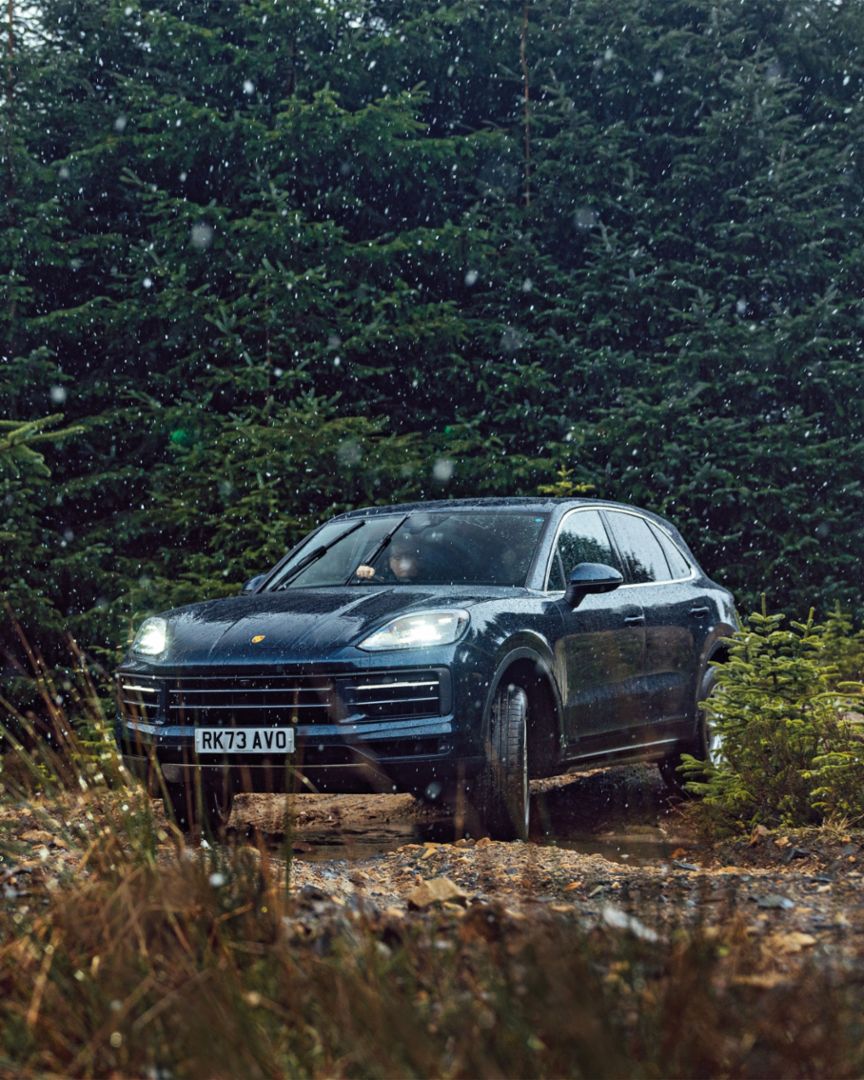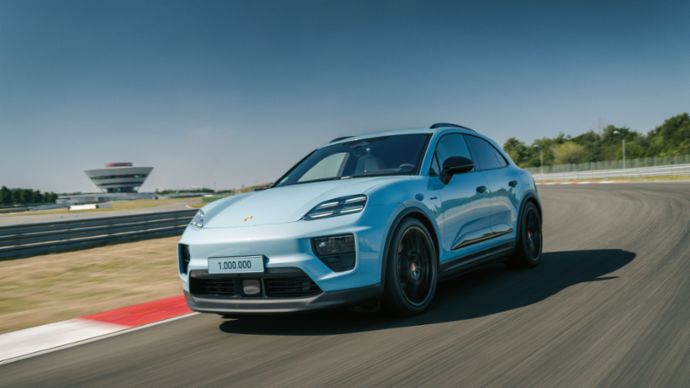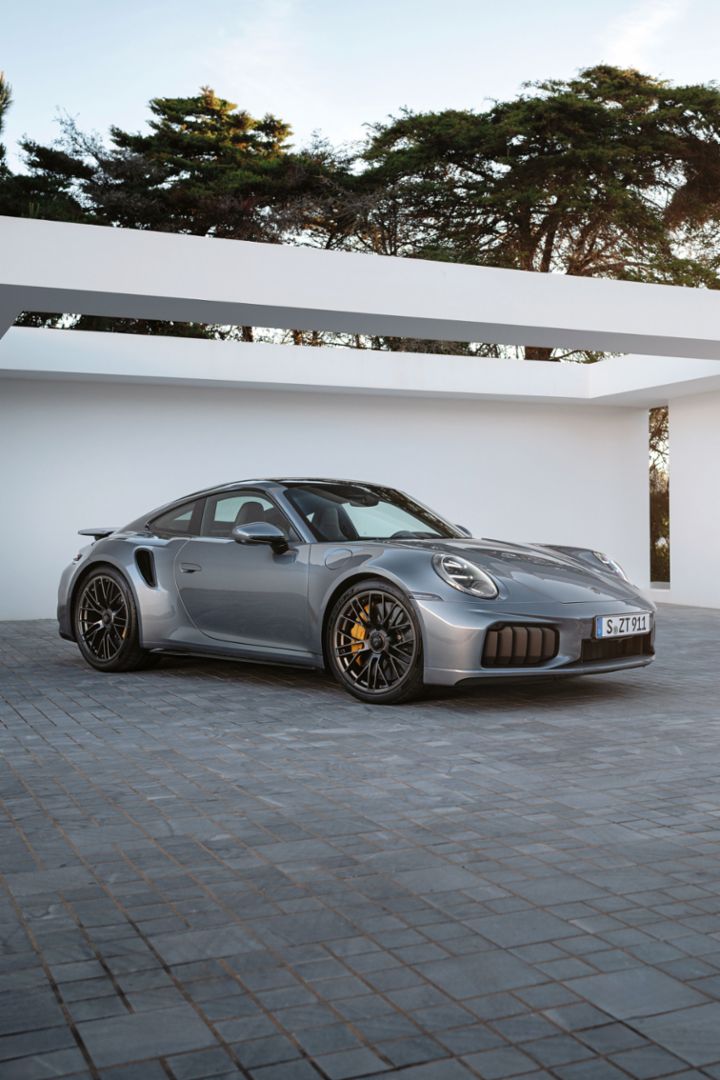Rough with the smooth
Porsche Great Britain – Road test: The Cayenne S and Cayenne E-Hybrid get a thorough examination, as our man goes off-road to navigate gravel paths and forest trails in the gloriously unspoilt landscape of Northumberland.
With open rolling moorland, dense forests and the rugged Pennines, the relatively remote Northumberland National Park covers over 400 square miles and features some of the most spectacular and varied landscapes you’ll find anywhere in the UK. Happily, the area is also packed full of some of the country’s best driving roads, so it’s the perfect place to put the latest Porsche Cayenne through its paces – on the road, as well as on some slightly more challenging terrain.
Until the original Cayenne arrived on the market back in 2002, the majority of 4x4s were utilitarian workhorses that delivered very little when it came to on-road performance or driver enjoyment. But it was the pioneering Porsche machine that helped to change that, and remains the definitive performance-focused SUV to this day. Plus, the refreshed third-generation model benefits from a host of new features – from resculpted exterior styling to an updated interior and a honed chassis to enhance both handling and ride comfort.

Off the beaten track:
The latest Cayenne delivers remarkable refinement – even when you’re tackling rougher surfaces.As we leave the grand surroundings of Matfen Hall in the new 4.0-litre twin-turbo V8-powered Cayenne S (Cayenne S: Fuel consumption* combined (WLTP) 12.7 – 12.0 l/100 km, CO₂ emissions* combined (WLTP) 287 – 272 g/km, CO₂ class G , CO₂ class weighted combined G ), it’s easy to appreciate the car’s exemplary refinement. The eight-speed Tiptronic S transmission shifts between gears imperceptibly as we gently cruise along, accompanied by a pleasing distant burble from the exhausts.

Raising the stakes:
The adaptive air suspension allows drivers to raise the ride height, lifting the Cayenne by up to 45 mm for the roughest, most challenging off-road surfaces.After winding along a section of road that follows the meandering North Tyne river, we arrive at Kielder Water, turning off the main road and driving across the top of the dam found at the enormous reservoir’s easternmost point. After a brief stop, our Cayenne convoy heads off-road, joining one of the winding gravel tracks that heads into Kielder Forest. Within seconds, we’re completely surrounded by towering spruce and pines trees. It’s safe to say that we’re in good hands, though. In total, nearly two-and-a-half million test miles were covered during the car’s development – including tough off-road tests in Spain and across punishing sand dunes in Morocco – so it comes as no surprise that the Cayenne makes light work of this loose, bumpy surface. After a surprisingly comfortable couple of miles through the forest, the trees thin out and we’re greeted by epic, sweeping panoramas of the Scottish Borders.
As we round a tight corner, the route we’re following narrows, and I wince as sagging tree branches brush the sides of the car. I spot some sizeable rocks peeking through the grass that covers the pronounced crown of the gravel track.
With thoughts of what might happen if they came into contact with the underside of the Cayenne, I select ‘Offroad 2’ mode, the adaptive air suspension raising the ride height by a lofty 45 mm (30 mm more than in Offroad 1) and set off confidently down the rutted trail.
Going from gravel back to smooth tarmac, the open, flowing roads of earlier in the day have become a twisting, undulating roller coaster, giving me an opportunity to put another facet of the Cayenne to the test. The first thing that strikes me is just how agile and capable the car feels on these tight, technical B-roads. Thanks to the Porsche Active Suspension Management (PASM), there’s barely any lean through the turns, whilst this Montego Blue car’s optional rear-axle steering delivers a sharper turn-in on entry to slow corners.

The best of both worlds:
Out on the road, this consummate SUV delivers an alluring blend of performance and refinement.
Creature comforts:
The new-generation Cayenne has a new interior design, packed full of features that enhance comfort and convenience.The Cayenne is the definitive performance-focused SUV
These roads are also where the car’s V8 comes into its own, its intoxicating roar amplified by a sonorous sports exhaust system. With 474 PS and 600 Nm on tap, the Cayenne S rockets from 0 to 62 mph in just 4.7 seconds (with the optional Sport Chrono Package) and on to 170 mph, but it’s the car’s in-gear performance that really impresses, with sublime mid-range shove that makes overtaking effortless.

The Cayenne has the comfort and practicality of an SUV, along with the sharpness and thrills you’d expect from a Porsche
At the next stop, I switch to the Cayenne E-Hybrid for a test drive with a twist. Earlier this year, the new plug-in hybrid SUV won the coveted overall Caravan and Motorhome Club’s Towcar of the Year award, so it seems only right that we put its capabilities to the test here. Hooked up to a trailer loaded with a pristine Porsche 928, we set off. Despite the narrow roads, you could forget you were towing, such is the car’s sublime refinement and stability. The Cayenne E-Hybrid is the only PHEV on sale today that’s capable of towing the maximum 3,500 kg. Using a turbocharged 3.0-litre V6 paired with a 25.9 kWh high-voltage battery (combining to produce 470 PS; Cayenne E-Hybrid: Fuel consumption* combined (WLTP) 4.5 – 4.0 l/100 km, Fuel consumption with depleted battery combined 10.6 – 9.9 l/100 km, Electric power consumption* combined (WLTP) 19.7 – 19.1 kWh/100 km, CO₂ emissions* combined (WLTP) 101 – 90 g/km, CO₂ class C – B , CO₂ class weighted combined C – B , CO₂ class with depleted battery G ), it’s capable of travelling up to 45 miles using purely electric power (WLTP figure).

Pulling power:
The Cayenne E-Hybrid was named 2024’s Towcar of the Year, and is the only PHEV on sale today that can tow the UK maximum of 3,500 kg.Having not spent any time behind the wheel of a Cayenne before, it’s obvious to see why it has proved so popular over the past two decades. Whether you’re tackling an epic driving road or heading further off the beaten track, this gifted all-rounder delivers all of the comfort and practicality of an SUV, but crucially retains the sharpness and thrills you’d expect from a Porsche.
Further information
Visit porsche.com/uk and click through Models/Cayenne.
Consumption data
911 Carrera GTS
Cayenne E-Hybrid
-
4.5 – 4.0 l/100 km
-
10.6 – 9.9 l/100 km
-
19.7 – 19.1 kWh/100 km
-
101 – 90 g/km
-
C – B Class
-
C – B Class
-
G Class
Cayenne S
-
12.7 – 12.0 l/100 km
-
287 – 272 g/km
-
G Class
-
G Class
Macan 4 Electric (preliminary values)
-
21.1 – 17.9 kWh/100 km
-
0 g/km
-
A Class




